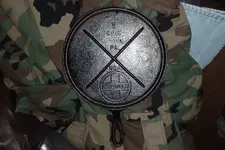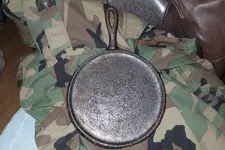Joanne
Full Member
- Joined
- Aug 2, 2015
- Messages
- 124
- Reaction score
- 300
- Golden Thread
- 0
- Location
- Las Vegas, NV
- Primary Interest:
- Prospecting
- #1
Thread Owner
Throughout the 1800's and 1900's mining camps sprung up almost overnight as gold and silver was found in the area. And just as quickly the camps were abandoned as the mines were worked out. Larger operations would have a full time cook for the crew. Smaller operations would make do with a miner cooking up the "grub" for the guys. When a mine was closed down the company would usually pack up everything of value and move on to the next strike. Occasionally a mine was shut down with the intention of being restarted later or that they would return for their equipment. This is the tale of a mine where the miners never returned.
For a number of years I've been actively exploring old mines across the southwest. Much of my exploring has been with a friend of mine from England called Speedy Caver. Most of the mines that we explore have been long abandoned and most haven't had anyone inside of them for 50 to 100 years. Last year we came across a mine out in the middle of the desert that looked interesting. It was a vertical shaft with quite a large waste pile around it. We decided to get out the ropes to see what we could see. Like many vertical mines, we were concerned that the shaft would be plugged with old timbers and other junk thrown into the mine. Speedy headed down first and found the plug that we expected about 20 feet below the surface. He found a small gap to squeeze through and continued his descent.


At 50 feet the vertical shaft transitioned to an incline of about 30 degrees and continued down another 100 feet. When Speedy reached the bottom he called up that I needed to climb down to see what he had found. I hooked up to the rope and followed Speedy's path down into the mine. As soon as I saw everything piled against the wall I immediately noticed a round griddle. Given the history of the area I suspect that the griddle had been sitting at the bottom of the mine for close to 100 years! I had to save it.

Surprisingly the griddle was in really good shape. There was a bit of surface rust in a couple of spots, but mostly it was just dusty and dirty. Evidently the mine's cook left it well seasoned and a bit crusty. Perfect to keep it from rusting even in this hostile environment. As my normal procedure, I put the griddle in the BBQ and burned off all of the crud then reseasoned it. It came out beautiful! It turns out to be an "Erie" 740 with a 10 on the underside of handle rather than the bottom of the griddle or on the top of the handle. It also does not have the Griswold emblem.

Somehow it seemed appropriate to take the griddle up to our mine to use it for the first time in possibly 100 years. I suspect that the mine's "cookie" would approve. It got broken in with breakfast sausage followed by eggs. It cooks beautifully too!


I'm now be part of the history of the piece and will add my story to it.
Joanne
For a number of years I've been actively exploring old mines across the southwest. Much of my exploring has been with a friend of mine from England called Speedy Caver. Most of the mines that we explore have been long abandoned and most haven't had anyone inside of them for 50 to 100 years. Last year we came across a mine out in the middle of the desert that looked interesting. It was a vertical shaft with quite a large waste pile around it. We decided to get out the ropes to see what we could see. Like many vertical mines, we were concerned that the shaft would be plugged with old timbers and other junk thrown into the mine. Speedy headed down first and found the plug that we expected about 20 feet below the surface. He found a small gap to squeeze through and continued his descent.


At 50 feet the vertical shaft transitioned to an incline of about 30 degrees and continued down another 100 feet. When Speedy reached the bottom he called up that I needed to climb down to see what he had found. I hooked up to the rope and followed Speedy's path down into the mine. As soon as I saw everything piled against the wall I immediately noticed a round griddle. Given the history of the area I suspect that the griddle had been sitting at the bottom of the mine for close to 100 years! I had to save it.

Surprisingly the griddle was in really good shape. There was a bit of surface rust in a couple of spots, but mostly it was just dusty and dirty. Evidently the mine's cook left it well seasoned and a bit crusty. Perfect to keep it from rusting even in this hostile environment. As my normal procedure, I put the griddle in the BBQ and burned off all of the crud then reseasoned it. It came out beautiful! It turns out to be an "Erie" 740 with a 10 on the underside of handle rather than the bottom of the griddle or on the top of the handle. It also does not have the Griswold emblem.

Somehow it seemed appropriate to take the griddle up to our mine to use it for the first time in possibly 100 years. I suspect that the mine's "cookie" would approve. It got broken in with breakfast sausage followed by eggs. It cooks beautifully too!


I'm now be part of the history of the piece and will add my story to it.
Joanne







